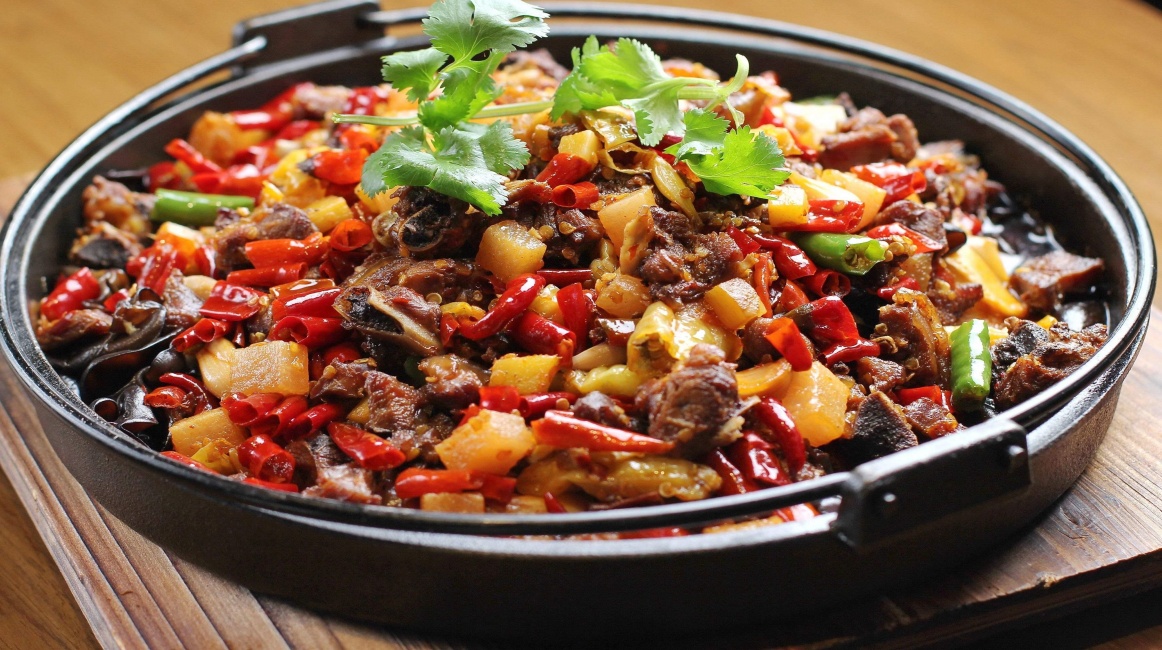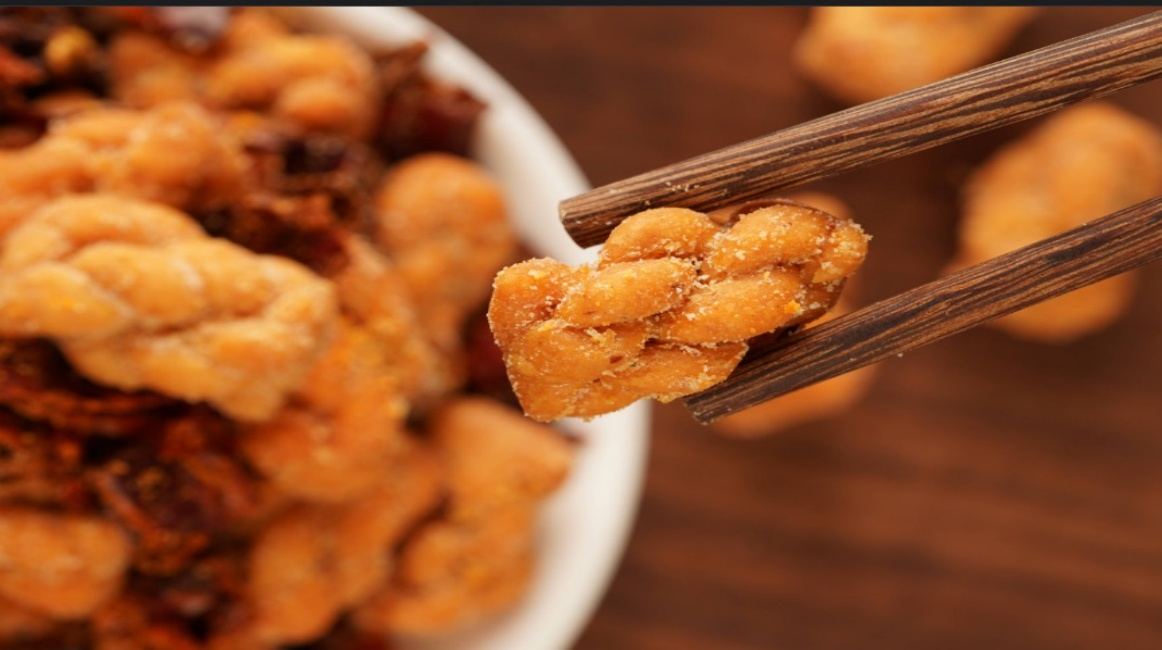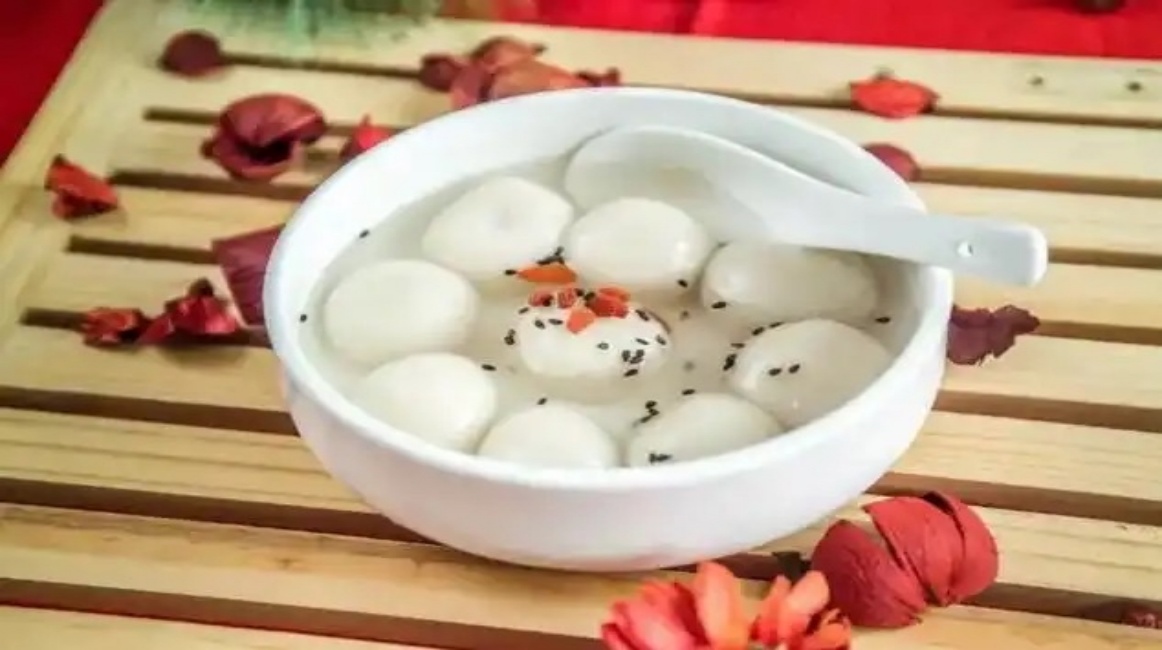Where the Yangtze and Jialing Rivers meet, mountains and mist intertwine, Chongqing's cuisine has always carried the grandeur of its landscape and the fiery passion of its people. This city, steeped in spiciness, embodies the wisdom of survival and the spirit of inclusiveness in every bite. From the staple food of dockworkers to the refined delicacies of traditional cuisine, from the simple noodles served in the morning alleys to the hearty dishes served in late-night taverns, Chongqing's food has transcended the boundaries of taste, becoming the city's most vivid cultural icon.

Chongqing hot pot is the city's quintessential flavor, etched into its very DNA. This bubbling red broth holds the most moving stories of survival. A century ago, the boatmen at the Yangtze River docks couldn't afford fresh meat, so they collected discarded offal such as tripe, duck intestines, and duck blood from the wealthy. Using beef tallow as a base, they mixed in plenty of chili peppers and Sichuan peppercorns, and boiled it over high heat in an iron pot—the intense spiciness and numbing sensation masked the gamey smell of the ingredients, dispelled the dampness of the riverbank, and numbed their hungry stomachs. Today, this red broth has undergone a magnificent transformation, becoming a golden symbol of Chongqing. The beef tallow broth becomes richer and more mellow with each simmer, the fresh spiciness of the chili peppers and the numbing aroma of the Sichuan peppercorns intertwining to create a complex fragrance. Tripe is cooked with a "seven dips and eight lifts" technique until it's crisp and tender, while beef aorta, coated in red oil, is refreshingly crunchy. Whether meat or vegetables, everything finds its home in this pot, just like Chongqing's inclusive and open-minded character. The "Hot Pot Sonata" performance at the 2022 Spring Festival Gala further propelled this fiery flavor nationwide, while innovative formats such as nitrogen sealing and hot pot cubes have given this traditional taste a new lease on life in the modern era.

If hot pot is the symphony of Chongqing cuisine, then Chongqing noodles are the solo performance in the early morning streets. A seemingly simple bowl of noodles, its soul lies entirely in the perfect ratio of seasonings—a secret-recipe red chili oil, bright red in color, freshly ground Sichuan peppercorns, and over ten kinds of condiments including soy sauce, vinegar, and pickled mustard greens. After mixing, every chewy noodle is coated in the sauce, the numbing spiciness and savory aroma hitting the taste buds directly. In the old noodle shops of Ciqikou, the owner scoops noodles with his left hand and adds seasonings with his right, his movements fluid and graceful. A bowl of hot noodles with vegetables and minced meat can satisfy an early morning hunger in just a few minutes. This kind of delicious food, deeply rooted in the streets, has no complicated procedures, yet it embodies the Chongqing people's passion for life, just like the city's character—straightforward, pure, and touching.

Jianghu cuisine is the most unrestrained footnote to Chongqing's cuisine, carrying the free and uninhibited spirit of the dock culture. Laifeng fish, considered the "ancestor" of Jianghu cuisine, is renowned for its numbing, spicy, fresh, fragrant, and tender flavors. Fresh fish is stir-fried in hot oil and then drizzled with a piping hot secret sauce, releasing an irresistible aroma with a sizzling sound. The fish is tender and flavorful, offering a satisfying spiciness without being overpowering. Nanshan's spicy chicken takes "strong flavors" to the extreme. Large chunks of chicken are fried until crispy on the outside and tender on the inside, buried in bright red chilies and Sichuan peppercorns. Every bite offers a delightful collision of smoky and spicy notes, making it an indispensable main dish at any dinner table. Then there's the richly spicy Maoxuewang (a Sichuan dish), featuring tender duck blood, crisp tripe, and fresh eel. These various ingredients blend together in a spicy broth, creating a truly exhilarating taste experience with every bite. This embodies the unique charm of Jianghu cuisine: "rustic, rustic, diverse, and robust."

The flavors of Chongqing are never just about spiciness; behind the heat, there's always a gentle comfort. Ciqikou's Chen-style fried dough twists are golden and crispy, with new flavors like low sugar and seaweed catering to modern tastes, making them a must-have souvenir for tourists. Mountain city glutinous rice balls are soft, chewy, and sweet, with black sesame filling melting in the syrup—a bite that warms the heart. The ice jelly in the old alleys, sprinkled with raisins, hawthorn pieces, and brown sugar syrup, is refreshingly sweet and a perfect accompaniment to relieving spiciness and heat. Gongqichang braised chicken, an intangible cultural heritage, has been passed down through three generations, using a unique four-step technique of "stir-frying, pressing, braising, and simmering" to lock in its freshness and aroma. Now, a mushroom flavor has been introduced, allowing those who don't like spicy food to savor the rich traditional flavor. Fuling pickled mustard tuber, Baishiyi braised duck, and other intangible cultural heritage foods are bringing their traditional flavors into more people's lives through cultural and creative innovation and online platforms.

Looking back at history, the spicy and numbing essence of Chongqing cuisine bears the marks of time. The *Huayang Guozhi* records that the people of Shu (Sichuan) "valued flavor" and "enjoyed spicy and fragrant foods." In ancient times, Sichuan and Chongqing had a tradition of consuming Sichuan peppercorns. After the introduction of chili peppers, they blended with the local climate and culinary culture, gradually forming a "no spice, no life" eating custom. From a flavor sought after by ancient canal merchants to a nationally renowned culinary icon, the evolution of Chongqing cuisine is a testament to cultural fusion and a reflection of the resilience and optimism of the Chongqing people. What were once the simple fare of boatmen have become delicacies carrying cultural identity. This vibrant flavor has long transcended the food itself, becoming the courage and strength of the Chongqing people in facing life.

In Chongqing, food is a celebration regardless of the occasion; it's the lively atmosphere of the streets and alleys, a sentiment etched into the very bones. Whether it's the bustling atmosphere of a hot pot restaurant, the steaming hot pot of a small noodle shop, or the hearty and satisfying fare of a traditional Sichuan restaurant, every flavor tells a story of this city. When the spicy and savory flavors burst on your tongue, and the sweet and mellow taste soothes your taste buds, you will understand that the charm of Chongqing cuisine lies not only in its unique flavors, but also in the inclusiveness, resilience, and passion it embodies. This vibrant world of spicy cuisine welcomes every diner with its fresh and delicious taste.



